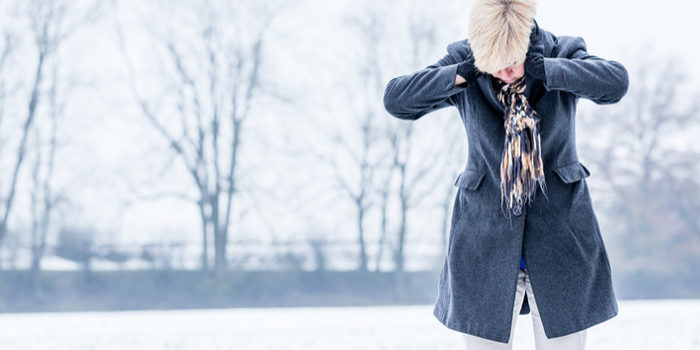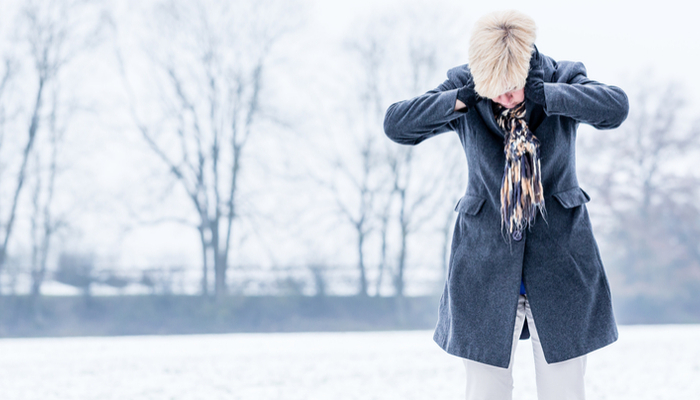


When the days get shorter, the sun shines lower in the sky, and the weather gets colder, people often experience a drop in mood. For some, the change is serious: They have difficulty getting up in the morning and feel lethargic much of the day. They crave sunlight and certain foods, and have to fight the urge to burrow under the covers until spring comes.
These are all symptoms of Seasonal Affective Disorder. SAD is seasonal mood disorder that usually erupts in October and November, when the days become shorter, and typically remits when spring approaches. SAD can look and feel much like depression, but it has a seasonal pattern.
Seasonal Affective Disorder (SAD) is a type of depression that occurs at the same time each year. Although it can occur in spring or summer, it typically begins in late fall and lasts through the end of winter. It can sap your energy, amp up your carb cravings, and leave you sad and moody for months on end. Could you be at risk? If you fall into three or more of these categories, it may be time to take action.
Common Signs of Seasonal Depression
Lethargy
If you feel like you’re having trouble getting out of bed, avoiding leaving your house and oversleeping often, you could be depressed. Lethargy is a common symptom of depression. If you feel fine during the warm months but can’t shake the feeling of being tired in the winter, it could be SAD affecting you. People who suffer from SAD often feel much more tired than normal during winter. Others have difficulty sleeping, which makes them feel even more fatigued. These sleep disturbances may also contribute to the sadness and mood swings associated with SAD.
Cravings
Do you crave sunlight and dread dreary winter days? This could be a sign that you’re experiencing SAD symptoms. Other cravings you might notice could be for certain foods, namely those that are high in carbohydrates. This can result in weight gain when paired with lethargy and low energy. Eating more carbs when the weather is colder is common in people with Seasonal Affective Disorder. According to MIT researchers, this is because when you eat carbs, you make serotonin – the same “feel good” hormone that antidepressants boost.
Loss of Interest
When the weather gets cold, do you find you lose interest in things you once found engaging? Many people who suffer from SAD state that they lose interest in their favorite things when the weather turns. Video games, movies, books and even sex can seem uninteresting to someone who is depressed. If you feel like this fog lifts in March when it’s time to set your clock ahead, that’s a pretty good sign that you suffer from SAD. In fact, if it happens every year (like clockwork), that’s almost a dead giveaway.
Mood Changes
The most prominent changes brought on by SAD are changes in mood. Those affected can feel anxious, irritable and unable to relax. This can result in a lack of focus and inability to feel content. This can also manifest as difficulty managing normal daily stress. About 80 percent of SAD sufferers are women who started having symptoms during their child-bearing years. A history or family history of depression also increases your risk of SAD.
You Live Far From the Equator
Experts believe Seasonal Affective Disorder can be triggered by shorter days and less sunlight exposure. It affects an estimated 10 million Americans, and it is much more common in cold climates. For example, it’s seven times more common in Washington State and New England than in Florida (wow!). Winter vacations to sunny climates can be an important way to alleviate the
symptoms of SAD and break up the long winter.
What to Do
If you feel as though you’re suffering from SAD, we recommend you first visit a mental health professional. Don’t attempt to treat your symptoms with alcohol or drugs, as this can be very dangerous. Seeking professional help can get an accurate diagnosis of your condition and your doctor can prescribe you medicine to help you manage the symptoms you’re experiencing.
There are treatments you can try on your own that could help your seasonal depression. Below are 4 simple things you can do that can help you overcome SAD.
Light Therapy
SAD is fundamentally about a lack of light (and not the lower temperature). You should prioritize getting outside on sunny days as much as you can. But aside from that, light boxes, lamps, and visors can provide up to 10,000 LUX of light, functioning as a “sun replacement.” Light therapy has been shown to be very effective for treating SAD. Be sure to get your device from a reputable company and to follow the “dosing” guidelines.
Eat a Balanced Diet
Craving carbs can make you gain weight, which itself can contribute to a bad mood and negative outlook. Try to find a balance between indulging your craving for carbs and eating sufficient amounts of protein and vegetables, while not going over your normal caloric intake. It is natural to gain a few pounds over the winter but the only way to make sure it doesn’t become more than that is to be mindful of your food intake.
Spend Time Outdoors
SAD can make you want to hibernate and lock yourself indoors until spring. Spending time outdoors and in nature combats this desire and restores mood and energy levels.
Medication
Many people who suffer from SAD take antidepressants seasonally, starting in the fall and then weaning off of them in the spring. If you think you could benefit from antidepressants, make an appointment with a psychiatrist or your primary-care physician.











No comments so far.
Be first to leave comment below.